#berthasaura leopoldinae
Text
Round Four: Berthasaura vs Caihong
Berthasaura leopoldinae

Artwork by @i-draws-dinosaurs, written by @i-draws-dinosaurs
Name meaning: Bertha and Leopoldina’s reptile (in honour of naturalist and women’s rights activist Bertha Maria Júlia Lutz, and first Empress of Brazil and advocate for Brazilian independence Maria Leopoldina)
Time: Uncertain, likely ~121 to 75 million years ago (Aptian to Albian stages of the Early Creataceous) but may be younger
Location: Goio-Erê Formation, Brazil
Theropods are famously carnivorous dinosaurs, but many, many groups of theropods have decided “actually but what if I didn’t” and gone vegetarian, and yet it’s still wild when another one of those pops up every now and then. Even among them though, Berthasaura is special for being the only theropod that seems to have tried to just straight up turn itself into an ornithopod. The long spindly legs, the teeny little arms, and a big head with a toothless beak all come together to create an utterly bizarre little theropod that honestly nobody could have predicted.
Berthasaura is a noasaur, and those of you familiar will at this moment be saying “oh of course it’s a noasaur” because those guys were small ceratosaurs that were basically Theropod Wacky Experimental Phase 1.0. Within this group you’ve got wild sticky-outy teeth, a single weight-bearing toe on each foot in our fellow competitor Vespersaurus, and now multiple instances of beaks evolving independently. Theropods just love to evolve a beak, what can I say? Whatever the hell Berthasaura had going on, it must have been successful because as the basalmost noasaurid currently known its direct lineage has been surviving since at least the Late Jurassic!
Caihong juji
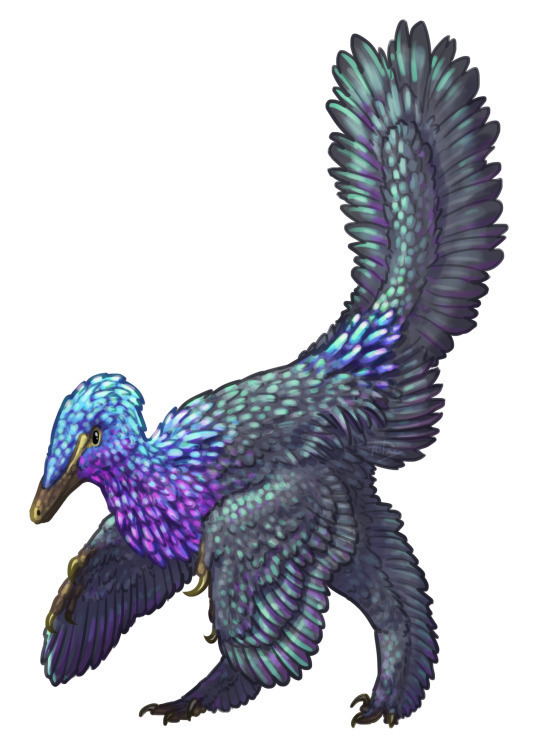
Artwork by @i-draws-dinosaurs, written by @i-draws-dinosaurs
Name meaning: Rainbow with big crest
Time: 161 million years old (Oxfordian stage of the Late Jurassic)
Location: Tiaojishan Formation, China
It’s always a special treat to hear the announcement of a dinosaur with known colours, because it gives the most direct impression of how truly stunning these animals would have been to witness in real life. And Caihong might just be the most spectacular of them all so far, described in 2018 from an immaculate full-body fossil that preserves detailed feathers! Caihong’s feathers are longer than some other floofy dinosaurs, and would have had the appearance of a luxurious mane along its neck. Not only that, the fossil preserves feather microstructures that in life would have made this dinosaur gloriously iridescent!
Now iridescent dinosaurs aren’t new, Microraptor has been decked out in fabulous starling-esque plumage for a while now, but Caihong absolutely takes it to the next level. Its whole body was covered in iridescent black, including the enormous tail, but the real star of the show are the platelet-like melanosomes found on the head, neck, and the base of the tail. Different from the usual iridescent melanosomes, the structure of these tiny organelles reflects brilliantly iridescent colours, like those on the heads of hummingbirds and particularly the bright purple feathers on the necks of the trumpeter family. Caihong would have put on an absolutely dazzling jewel-toned display in the treetops or on the forest floor of prehistoric China!
#dmm#dmm rising stars#dinosaur march madness#dinosaurs#birds#march madness#bracket#polls#palaeoblr#birblr#paleontology#round four#berthasaura#caihong
162 notes
·
View notes
Text
VOTE BERTHASAURA FOR DINOSAUR MARCH MADNESS 2023
Berthasaura is just *barely* losing @a-dinosaur-a-day‘s DMM poll and if the only remaining Noasaur loses to a friggin Spinosaur I might actually riot
A vote for Berthasaura is a vote for all Noasaurs, arguably the weirdest collection of non-avian theropods to ever exist. A vote for Berthasaura is, by extension, a vote for:
- Masiakasaurus “why are your teeth like that“ knopfleri of Prehistoric Planet fame, a genuíne Madagascan weirdo
- Vespersaurus “only dinosaur that walks on one toe” paranaensis (yes that includes all birds), tragic second place of the previous round
- Limusaurus “are you sure that’s even a theropod” inextricabilis, which started out like normal little baby theropods before losing their teeth and becoming quasi-ornithomimid beaked herbivores, and its fellow Elaphrosaurines
- Noasaurids are also the closest relatives of Abelisaurs, which should be worth extra brownie points
And Berthasaura itself was no slouch either! In addition to being arguably The Most Ornithopod of any theropod (vote for wacky convergent evolution!), it evolved its toothlessness independently of the Elaphrosaurines, and was toothless its entire life! Friggin Noasaurs don’t even do toothlesness the same way twice apparently. Berthasaura also holds the distinction of being the second ever toothless non-ceolosaurian theropod to be described, and it had a nearly complete skeleton! Berthasaura was an ornithomimid before ornithomimids became cool (or even existed), an early-cretaceous throwback to Shuvosaurids, the first of a long line of weirdo theropods. Peak dinosaur, 9/10.

Meanwhile Ceratosuchops is what, a Baryonychine with a horn on its head? Boo, unoriginal, 4/10. The horn ain’t even that big. It’s only known from some fragments of a skull (again: compare to Berthasaura’s remarkably complete skeleton) and in all honesty I’m just tired of Spinosaurs at this point. I couldn’t even keep track of whatever Spinosaurus drama was happening back when I was deep in my early Covid paleo hyperfixation and I'm kinda scared to check in on it. Apologies to Darren Naish, but I’ve had a petty grudge against spotlight-stealing Spinosaurs since like the third post-2014 Spinosaurus paper and it sure as hell-herons ain’t going away now. Sure, Ceratosuchops was a heron-analogue with a cool name, but it’s not even a proper heron mimic. If you want some real convergent evolution, vote for Berthasaura.
Am I deliberately skimping on Baryonychine facts due to a petty grudge against the most famous member of the family? Yes definitely absolutely. They get enough attention as is. And what do they have that Noasaurs don’t? Weird teeth and an aquatic diet? See Masiakasaurus. Big fore-claws? See Noasaurus. Large size? Overrated, and Deltadromeus might be a Noasaur so they even have that covered. Sail-backs and a semiaquatic lifestyle? That’s Spinosaurus bias talking, vote for Bajadasaurus or Annakacygna instead. Spinosaurs may be fan-favorite weirdo dinosaurs, but I think that Noasaurs were objectively weirder and deserve to advance in the polls. Vote Berthasaura for a weirder, wackier theropod (and a way to unload that pent-up anti-Spinosaurus grudge, if you like)
#dinosaur march madness#dmm rising stars#dmm round two#berthasaura#noasauridae#noasaur#spinosaur slander#a-dinosaur-a-day#reminder that any slander spoken during march madness season may not reflect my normal opinions on that animal#dinosaurs
67 notes
·
View notes
Note
I still have yet to see what ideas you have about our "matching dinosaur pj's" hc for Kaz and Chase
chase is a Berthasaura Leopoldinae (the rarest dinosaur and it lived over 70/80 million years ago)
kaz is a regular t-rex (later chase buys him a megalosaurus pj set, since it was the first dinosaur fossil ever discovered and kaz is chase's first real partner and the first person to show him real, unconditional romantic love)
3 notes
·
View notes
Photo
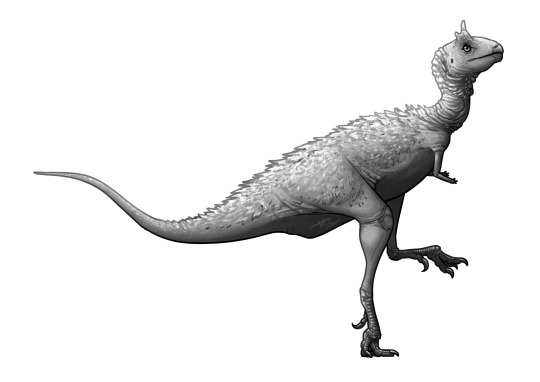

New dinosaur: Berthasaura leopoldinae
There’s a new strange little dinosaur on the block!! Berthasaura is a Brazilian dinosaur species known from one skeleton so far, that represents a sub-adult individual that’s close to one metre in length, so while the adults were probably a bit bigger they would not have been that much larger!
The naming of this species is rather lovely! Berthasaura is named for Bertha Maria Júlia Lutz, a Brazilian zoologist and women’s rights activist. The species name leopoldinae comes from both the first Brazilian Empress Maria Leopoldina in celebration of the upcoming Brazilian independence bicentenary next year, as well as from Imperatriz Leopoldinense, a samba school that wrote a theme for the National Museum of Brazil which tragically burned down last year.

Berthasaura is a ceratosaur, a group of theropods that include cool stuff like Ceratosaurus and abelisaurids, and also just this one group of incredibly weird messed up tiny guys called noasaurids that this new one belongs to. There are no normal noasaurids, they are all bizarre in special and different ways.
Berthsaura has lost all its teeth and evolved a beak. There is another beaked noasaurid called Limusaurus, but these two are actually not really closely related, so toothlessness probably evolved twice in this one group.
It also had absolutely tiny hands, something that seems to happen again and again for some reason in ceratosauria. I also can’t get over how muppety its head looks, it’s so funny.

Basically, this was a theropod doing its very best to become an ornithopod, which I think is just excellent and I love it. The figures I’ve used come from the original paper, which you can read here!
#dinosaur#berthasaura#berthasaura leopoldinae#paleontology#paleoart#new dinosaur#palaeoblr#my art#digital art#theropod#cretaceous
391 notes
·
View notes
Link
Remains of a toothless, two-legged dinosaur species that lived some 70 million years ago has been discovered in Brazil, researchers said Thursday, calling it a "very rare" find.
The small dinosaur, which measured about a meter (three feet) long and 80 centimeters (two and a half feet) tall, is a theropod, a group whose members were almost all believed to be carnivores.
But puzzlingly, the new species – dubbed Berthasaura leopoldinae – has a beak-like mouth with no teeth.
Continue Reading.
136 notes
·
View notes
Text
Berthasaura leopoldinae de Souza et al., 2021 (new genus and species)
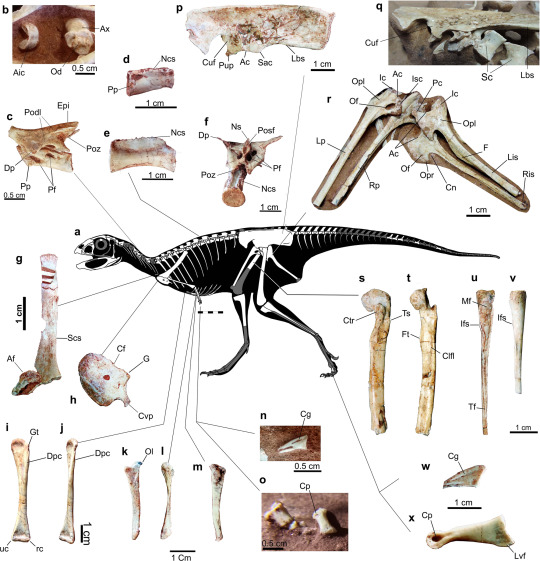
(Select bones and schematic skeletal of Berthasaura leopoldinae, with preserved bones in white, from de Souza et al., 2021)
Meaning of name: Berthasaura = [Brazilian zoologist and politician who was a leading figure during the Pan American feminist movement] Bertha Maria Júlia Lutz’s lizard; leopoldinae = for Maria Leopoldina [the first Empress of Brazil] and Imperatriz Leopoldinense [a samba school that developed a theme to commemorate the National Museum of Brazil]
Age: Early Cretaceous (Aptian–Albian)
Where found: Goio Erê Formation, Paraná, Brazil
How much is known: Nearly complete skeleton of one individual.
Notes: Berthasaura was a small ceratosaurian theropod, less than a meter long in total body length. To be fair, the only known specimen was probably not fully grown. Based on comparison to other ceratosaurs with more completely known growth series, however, it was likely not an early juvenile individual either.
Whereas most other ceratosaurs were sharp-toothed predators, Berthasaura was extremely unusual in having toothless jaws, and it may have instead been an herbivore or an omnivore. The only other toothless ceratosaur named previously was Limusaurus from the Late Jurassic of China. Interestingly, the describers of Berthasaura found that it was probably not especially closely related to Limusaurus. If this is correct, ceratosaurs evolved into toothless forms at least two separate times in their evolutionary history.
Although Limusaurus was a toothless herbivore as an adult, it had sharp teeth as a juvenile. If Berthasaura also went through this process, it might have lost its teeth at an earlier growth stage than Limusaurus did, given the immaturity of the type specimen. However, it is also possible that it was toothless throughout its life. Without additional fossils of Berthasaura at other growth stages, it is hard to be sure.

(Type specimen of Berthasaura leopoldinae, from de Souza et al., 2021)
Reference: de Souza, G.A., M.B. Soares, L.C. Weinschütz, E. Wilner, R.T. Lopes, O.M.O. de Araújo, and A.W.A. Kellner. 2021. The first edentulous ceratosaur from South America. Scientific Reports 11: 22281. doi: 10.1038/s41598-021-01312-4
169 notes
·
View notes
Text
A Rather Tiny, 'Very Rare' Toothless Dinosaur Was Just Discovered in Brazil
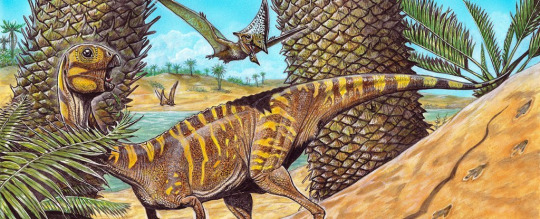
[Image description: paleoart of Berthasaura leopoldinae by Maurilio Oliveira.]
Remains of a toothless, two-legged dinosaur species that lived some 70 million years ago has been discovered in Brazil, researchers said Thursday, calling it a "very rare" find.
The small dinosaur, which measured about a meter (three feet) long and 80 centimeters (two and a half feet) tall, is a theropod, a group whose members were almost all believed to be carnivores.
But puzzlingly, the new species – dubbed Berthasaura leopoldinae – has a beak-like mouth with no teeth.
"That was a real surprise," the paleontologists who made the find said in a statement released by Brazil's National Museum.
They published their findings in the journal Nature, calling the discovery "one of the most complete dinosaurs found from the Cretaceous period in Brazil."
Continue reading.
44 notes
·
View notes
Note
Not ml just here to say that a new dinosaur was found in Brazil! The name is berthasaura leopoldinae, these are the names of two historical important woman's here on Brazil.
The last one dinosaur that was discovered had feathers (I forgot his name sorry!) But he was stolen by England and still didn't came back unfortunately, but brazilians like me now are more and more interested in Brazil dinosaur history so I hope nothing like this happens again.
Just thought it was fun to share.


NGL! I laughed when i heard the name! Why does the toxic-ex from my grandpa get a dinosaur?
Hahah!
BUT! I didn't heard of it, but it is always wonderful to hear about new dinosaurs! The Dinosaurs from South america are cool AF! They were HuGE! I love them!
28 notes
·
View notes
Photo

Happy not the first day of December, but also #dinocember to everyone! So here’s day 1 to 4 or more specifically, Week 1: A dinosaur you’re never drawn before. Surprisedly I’m already drawn 4 new dinosaurs from yesterday where I haven’t been drawing after few weeks. These are Issi saaneq, Kuru kulla, Berthasaura Leopoldinae and Brighstoneus simmondi. #dinocember2021 #dinosaurs #dinosauria #tonedtan #sketchbook #sketchbookdrawing #artistsoninstagram #myart https://www.instagram.com/p/CW9jdBgPWMt/?utm_medium=tumblr
#dinocember#dinocember2021#dinosaurs#dinosauria#tonedtan#sketchbook#sketchbookdrawing#artistsoninstagram#myart
0 notes
Link
0 notes
Text
Allesfresser aus der Kreidezeit: Völlig neue, zahnlose Dinosaurierart entdeckt
Allesfresser aus der Kreidezeit: Völlig neue, zahnlose Dinosaurierart entdeckt
Entlang einer Landstraße im brasilianischen Bundesstaat Paraná entdecken Forscher eine neue Dinosaurierart. "Berthasaura leopoldinae" hatte zwar keine Zähne – das heißt aber nicht, dass er sich fleischlos ernährt hat. Mit der Benennung der Art werden zwei bedeutende Frauen geehrt.
Weiterlesen…

View On WordPress
0 notes
Text
Round Two: Berthasaura vs Ceratosuchops
Berthasaura leopoldinae

Artwork by @i-draws-dinosaurs, written by @i-draws-dinosaurs
Name meaning: Bertha and Leopoldina’s reptile (in honour of naturalist and women’s rights activist Bertha Maria Júlia Lutz, and first Empress of Brazil and advocate for Brazilian independence Maria Leopoldina)
Time: Uncertain, likely ~121 to 75 million years ago (Aptian to Albian stages of the Early Creataceous) but may be younger
Location: Goio-Erê Formation, Brazil
Theropods are famously carnivorous dinosaurs, but many, many groups of theropods have decided “actually but what if I didn’t” and gone vegetarian, and yet it’s still wild when another one of those pops up every now and then. Even among them though, Berthasaura is special for being the only theropod that seems to have tried to just straight up turn itself into an ornithopod. The long spindly legs, the teeny little arms, and a big head with a toothless beak all come together to create an utterly bizarre little theropod that honestly nobody could have predicted.
Berthasaura is a noasaur, and those of you familiar will at this moment be saying “oh of course it’s a noasaur” because those guys were small ceratosaurs that were basically Theropod Wacky Experimental Phase 1.0. Within this group you’ve got wild sticky-outy teeth, a single weight-bearing toe on each foot in our fellow competitor Vespersaurus, and now multiple instances of beaks evolving independently. Theropods just love to evolve a beak, what can I say? Whatever the hell Berthasaura had going on, it must have been successful because as the basalmost noasaurid currently known its direct lineage has been surviving since at least the Late Jurassic!
Ceratosuchops inferodios
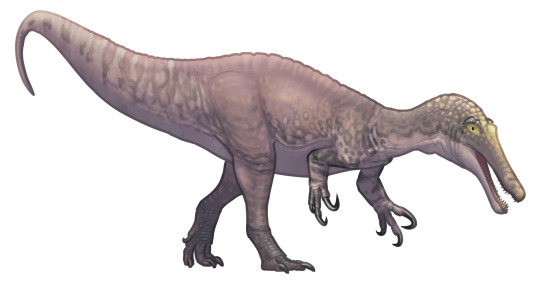
Artwork by @i-draws-dinosaurs, written by @zygodactylus
Name Meaning: Horned Crocodile Faced Hell Heron
Time: ~128 million years ago (Barremian stage of the Early Cretaceous)
Location: Wessex Formation, Isle of Wight, England
Say hello to the Hell Heron! Ceratosuchops is one of many new Spinosaurs described recently, showcasing the sheer diversity of this group as well as their much larger spread than previously believed. Ceratosuchops, previously thought to be just Baryonyx, is one of such new taxa that point to the entire group originating in Europe, a piece of their evolutionary puzzle not previously well known. Ceratosuchops was about 8.5 meters long, and had a long crocodile-like skull, with a horn on the top of it (hence its name). As a spinosaur, it would have probably been an aquatic stalker (you know, like a heron) - waiting near bodies of water for food, and snatching it up before it could swim away. Just, the difference between Ceratosuchops and actual herons, well, this was a big heron. It probably wouldn’t have had a sail, though it is possible it may have had a ridge like its close relative Suchomimus. It lived in a heavily river-filled environment, giving it a wide variety of locations to choose from for hunting. Besides a vast diversity of invertebrates, sharks, ray-finned fish, salamanders, lizards, turtles, many kinds of Neosuchians, Plesiosaurs, mammals, and pterosaurs, Ceratosuchops lived alongside other dinosaurs such as Hypsilophodon, Brighstoneus, Iguanodon, Mantellisaurus, Valdosaurus, Polacanthus, Eucamerotus, Oplosaurus, Ornithopsis, Aristosuchus, Calamosaurus, Calamospondylus, Eotyrannus, Neovenator, Ornithodesmus, Yaverlandia, Vectiraptor, Thecocoelurus, and even another spinosaur, Riparovenator!
#dmm#dinosaur march madness#dinosaurs#birds#dmm rising stars#dmm round two#palaeoblr#birblr#paleontology#bracket#march madness#polls#berthasaura#ceratosuchops
177 notes
·
View notes
Text
Una nuova specie di ceratosauro scoperta in Brasile
Una nuova specie di ceratosauro scoperta in Brasile
Ricostruzione in vita di Berthasaura leopoldinae.
Un nuovo genere e specie di ceratosauro noasauride sdentato è stato identificato da uno scheletro eccezionalmente completo trovato nel sud del Brasile.
La specie di dinosauro appena identificata viveva in quello che ora è il Brasile durante il Cretaceo iniziale, tra 125 e 100 milioni di anni fa.
Chiamato Berthasaura leopoldinae, aveva una…

View On WordPress
0 notes
Text
O Berthasaura leopoldinae é o primeiro exemplar de dinossauro brasileiro
O Berthasaura leopoldinae é o primeiro exemplar de dinossauro brasileiro
A nova espécie nunca tinha sido detectada na América Latina e o bom estado de conservação das ossadas surpreendeu os paleontólogos.
Tem nome de imperatriz e é um dos fosséis mais completos de um dinossauro do período cretáceo alguma vez encontrado no Brasil. O Museu Nacional da Universidade Federal do Rio de Janeiro anunciou na última quinta-feira que descobriu um exemplar fóssil de uma espécie…

View On WordPress
0 notes
Text
Descubren en Brasil un dinosaurio que no tenía dientes.
Descubren en Brasil un dinosaurio que no tenía dientes.
El director del Museo Nacional UFRJ, el paleontólogo Alexander Kellner, destacó el buen nivel de conservación de los fósiles encontrados.
El Museo Nacional de Río de Janeiro anunció este jueves el descubrimiento de una nueva especie de dinosaurio “muy raro”, un terópodo “sin dientes” que vivió hace entre 70 y 80 millones de años en el sur de Brasil.
Bautizada como ‘Berthasaura leopoldinae’,…
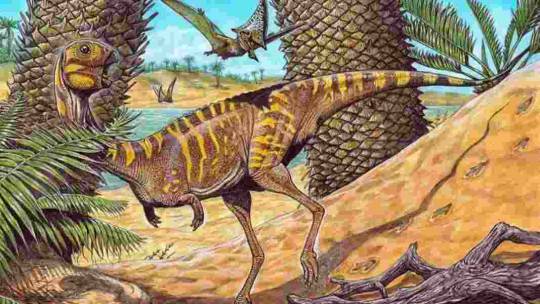
View On WordPress
0 notes
Text
Remains of a toothless, two-legged dinosaur species that lived some 70 million years ago has been discovered in Brazil,
Remains of a toothless, two-legged dinosaur species that lived some 70 million years ago has been discovered in Brazil,
The small dinosaur, which measured about a meter (three feet) long and 80 centimeters (two and a half feet) tall, is a theropod, a group whose members were almost all believed to be carnivores.
But puzzlingly, the new species — dubbed Berthasaura leopoldinae — has a beak-like mouth with no teeth.
“That was a real surprise,” the paleontologists who made the find said in a statement released by…
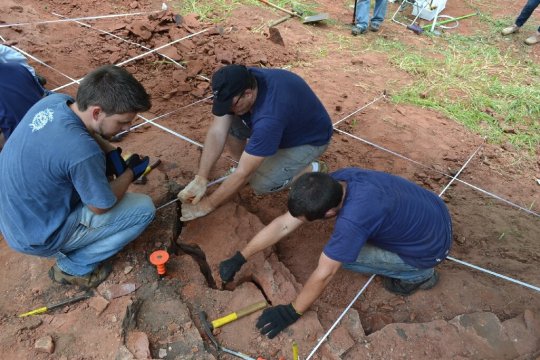
View On WordPress
0 notes